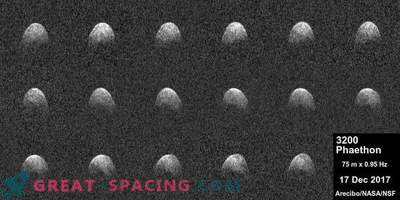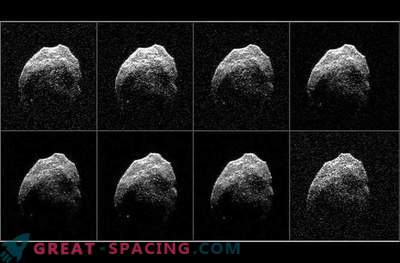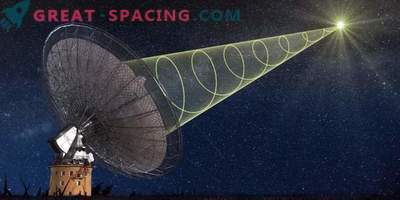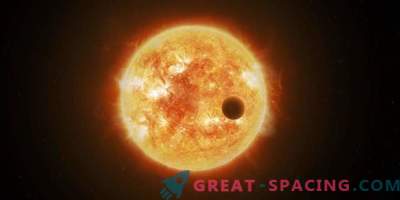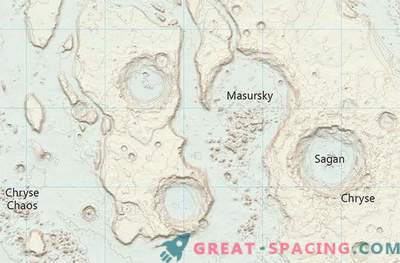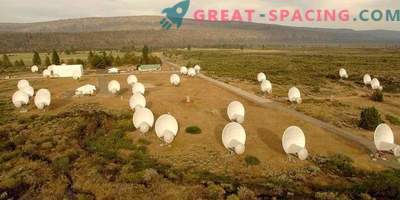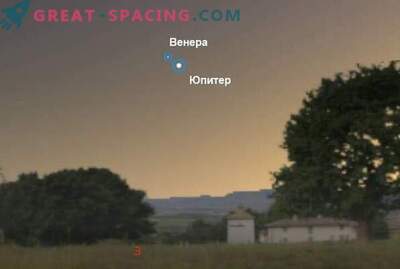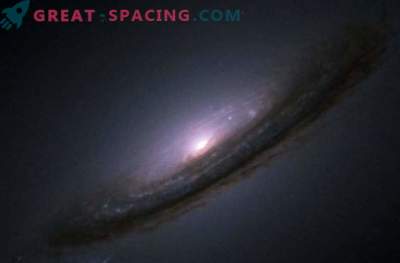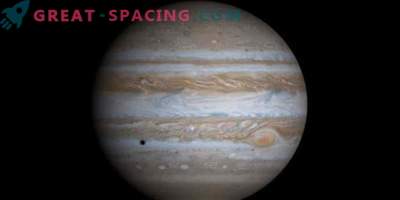
New observations from the world's three largest radio telescopes have shown that the asteroid discovered last year represents two objects 900 meters in size, orbiting around each other.
The 2017 near-earth asteroid YE5 was found on December 21, 2017, but no details about its physical properties were known until the end of June. It consists of two objects, almost identical in size.
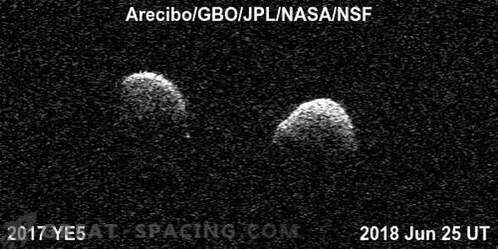
Bi-static radar images of the 2017 YE5 double asteroid from the Arecibo and Green Bank observatories taken on June 25th. The review shows that the asteroid is represented by two separate objects rotating around each other
June 21, the asteroid 2017 YE5 approached the Earth at the closest distance in the next 170 years, reaching 6 million km. Observations of June 21-22 from the GSSR radar system (California) showed the first signs that we have a dual system. The survey revealed two separate fractions, but the orientation of the asteroid was such that it was not possible to see whether the objects were separated or merged. As a result, the objects turned, showing a clear break.
The three largest radio telescopes in the world have teamed up to show a rare double asteroid. 2017 YE5 is the fourth double near-earth asteroid, where the two bodies have approximately the same parameters and do not touch. The video shows a pair of radar images from GSSR, Arecibo and Green Bank On June 24th, the Arecibo scientists teamed up with Green Bank representatives to confirm that the 2017 YE5 consists of two separate objects. On June 26, the observatories confirmed the binary nature independently. The new review shows that objects revolve around each other at intervals of 20-24 hours.
The radar image shows that both objects are larger than their combined optical brightness. That is, they do not reflect as much sunlight as a typical rocky asteroid does. 2017 YE5, probably in the dark reminds of charcoal. The pictures also show a striking difference in reflectivity, which was not previously observed among more than 50 double asteroid systems studied by radars since 2000. Most likely, objects differ in density, composition near the surface or roughness.

Radar images of the 2017 YE5 double asteroid from GSS R, captured on June 23, 2018
Researchers estimate that among near-earth asteroids larger than 200 m, about 15% belong to double ones, where one object is larger. But binaries, like 2017 YE5, with roughly the same parameters are rare.
The discovery of a double nature makes it possible to improve the understanding of various types of double asteroids and study the mechanisms of their formation and interaction. Also, the analysis of combined radar and optical observations will allow us to estimate the density of bodies 2017 YE5, which will open access to the composition and structure.
